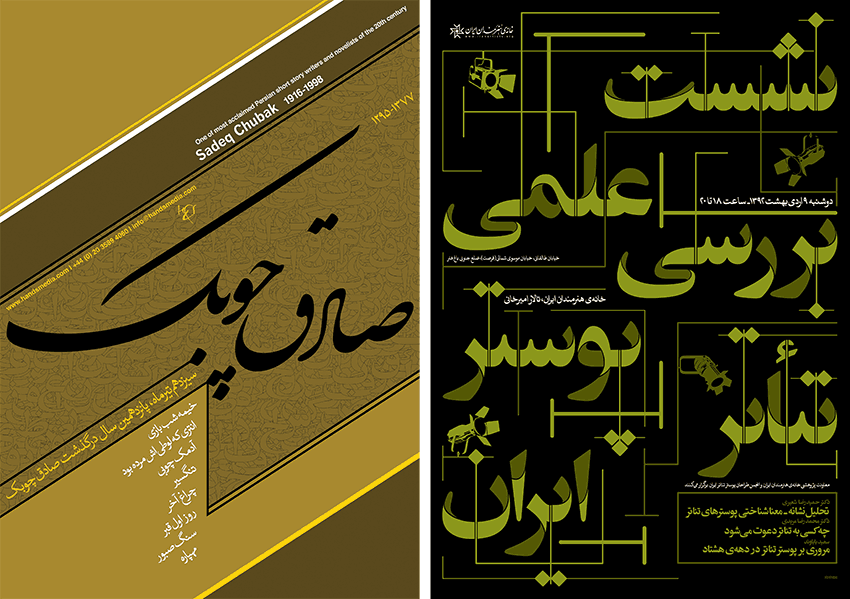We spoke to Roger Black about the Readability Series and Reading Edge Series. These two programs evidence the efforts that Roger and his company, The Font Bureau are forging in designing typefaces for readability through print and digital technologies.
Roger Black designed more magazines than you'll ever read. He has designed and redesigned Rolling Stone, The New York Times Magazine, Newsweek,The Washington Post, The New Republic, Fast Company, Reader's Digest, Foreign Affairs, Advertising Age, Esquire, Los Angeles Times, MSNBC.com and BarnesandNoble.com and more.
We love the Readability Series; the commitment to alternatives and grades for print technologies. It’s quite a collection of faces with personality and characteristics that make type readable in small sizes. How does Font Bureau achieve such a beautiful balance in the approach to type design?
Well, thanks! The intention is to provide a range of alternatives. As has been said by a number of observers, “readability is a factor of familiarity.” So, the most readable typefaces vary by culture and use. What works well for a historical text, might not be as good for a government health warning.
Designers at Font Bureau accept that we have a lot to learn from the past. The work done by Morris Fuller Benton—or more recently by Matthew Carter, was itself built on lessons learned from the history of writing and printing. The Readability Series itself is modeled after Chauncey Griffith’s Legibility Series at Mergenthaler Linotype.
Cyrus Highsmith made reference to Griffith in the design of Zocolo. With Quiosco, he drew on the lessons learned by W.A. Dwiggins, who famously used his experience with making puppets to make more emphatic distinctions between characters—thus creating a clearer alphabetic code.
With the current popularity to minimize print runs and page counts, typefaces that read well at really small sizes are important for multiple page documents. What types of design adjustments are made to character shapes to keep from losing shape as the ink soaks into the paper after printing?
There’s always been an urge to fit more text when space is limited. Newspapers in the 19th century were often set in 7- or 8-point, since there were only so many different pages that could be printed in a day. Each size of type then was cut by hand, and with experience, the punch cutters adapted the design of letters to print well in small sizes.
Ink spread on newsprint is different from the “aliasing” effect of a screen. But to make the text readable at small sizes, the lessons learned in the hot type era are still useful. David Berlow sums them up as The Verdana Principle (which sounds like an action movie starring Matt Damon). Matthew Carter’s Verdana, a system font for Microsoft that seems like the antidote to Ariel—a sans serif that’s very readable on the screen. The principle has four key characteristics:
- Wider width
- Open counters
- Open apertures
- High x-height
- Sturdy thin strokes
Another way of saying this is “not Helvetica.” Compare text set in Verdana to Arial, and you’ll see all these points, even if you enlarge the Arial 110 percent.
For Verdana to be more readable, it is also a lot wider than many text faces. And so is Benton Modern Text. This comes as counterintuitive to many designers, who seek to improve legibility at small sizes by using a condensed typeface. But the key to legibility is the amount of white space (counters) inside the letters, not the nominal point size. More condensed type styles squeeze out the counter space.
Font Bureau continues the quest for readable type with The Reading Edge Series. What design considerations are made for screen readability that differ from print readability?
Here’s where readability really counts—but there’s no cost of paper and printing, so if the text takes more space, it’s okay.
Many type designers fret about the different rendering schemes, but it is the design is more important. Using The Verdana Principle, we’ve come up with a range of great solutions for Webtype. Some RE fonts are traditional, like Benton Modern RE, which follows the well-trod path of Mergenthaler’s Ionic No. 5. Then there there is the fantastic updated 16th Century Dutch old style, Poynter Serif RE. And the unexpectedly hip Custer, from David Berlow, which is like a Western starring Quentin Tarantino.
For a contemporary styles, there are RE cuts of Highsmith’s Antenna and Scout, and David Jonathan Ross’s Turnip. These are text fonts that learn form the past, without looking like it.













